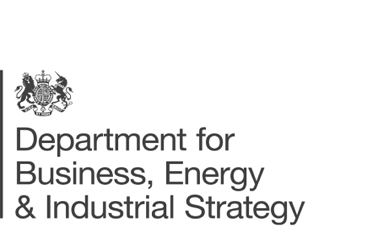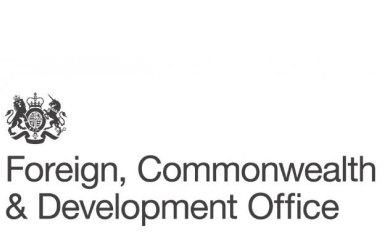The BIM Fundamentals document is part of the reference documentary framework for the “Plan for the incorporation of the BIM methodology in public procurement of the General State Administration (AGE)” that the Interministerial Commission is producing.
https://cvp.mitma.gob.es/fundamentos-bim-para-la-contratacion-publica-2
Approval of PlanBIM and the gradual introduction of mandatory BIM requirements on Public procurement from 2024
https://boe.es/boe/dias/2023/07/20/pdfs/BOE-A-2023-16784.pdf
Periodic analysis and reporting of BIM requirements in Public Tenders
https://cibim.mitma.es/observatorio/informes-trimestrales-del-observatorio
ISO 19650 is the prominent global standard for the implementation of BIM, focusing on the collaborative process integral to the entire life cycle of constructed assets. Developed and published by the International Organization for Standardization (ISO), this standard serves as a comprehensive framework for managing information from the conception of a project, through construction and operation to its eventual decommissioning. The development and publication of ISO 19650 highlights the commitment of international standards bodies to creating a consistent and efficient approach to BIM implementation on a global scale.
ISO 19650 is a multi-part standard. Part 1 delineates fundamental concepts and principles, while Part 2 provides practical guidance for information management throughout the project life cycle. The scalability of ISO 19650 allows organizations to tailor its application to the specific needs and intricacies of their projects. As an internationally recognized standard, ISO 19650 reflects the collaborative efforts of standards bodies to enhance global construction industry practices. Throughout this process, transparency, collaboration, and consensus-building are key principles. ISO standards, including ISO 19650, are developed with input from experts and stakeholders worldwide to ensure that they reflect a global consensus on best practices.
A country might choose to adopt ISO 19650 for several reasons, all of which contribute to the standard’s potential benefits in enhancing the efficiency and effectiveness of construction and infrastructure projects. Some of the reasons why a country might decide to adopt ISO 19650:
- Global standardisation of processes
- Support interoperability and collaboration
- Consider a quality assured approach to information management
- Competitive advantage and potential for cross boarder trade
- Improved project delivery outcomes
In summary, the adoption of ISO 19650 by a country can bring about international alignment, improved collaboration, risk reduction, and enhanced competitiveness in the construction industry, ultimately contributing to more successful and sustainable infrastructure development. Countries will usually adopt ISO 19650 by publishing a national annex to the standard.
https://www.une.org/encuentra-tu-norma/busca-tu-norma/norma/?c=N0062137
The BoletÃn Oficial del Estado (BOE) publishes decrees by the ‘Cortes GeneralesÂ’, Spain’s Parliament (comprising the Senate and the Congress of Deputies) as well as those orders enacted by the Spanish Autonomous Communities. This includes the official publishing of all Spanish judicial, royal and national governmental decrees, as well as any orders by the Council of Ministers. The General State Administration plans to strengthen the process of implementation and development of the BIM methodology in public procurement in the civil engineering and construction sector in Spain, incorporating BIM requirements in the tenders for civil engineering and public works contracts. Royal Decree 472/2019, published on the 2 August 2019, regulates the direct granting of subsidies to various professional associations and general councils of professional associations for training in the BIM methodology during the 2019 budget year.
Recently Spain has committed to carrying out information and training actions for the personnel in charge of implementing the Plan for the Incorporation of the BIM Methodology in public procurement in the General State Administration, as well as the promotion of the use of BIM in the professional and teaching field of construction. This is why it is necessary to promote the training of professionals in the sector in this collaborative methodology. In order for this training to be similar quantitatively and qualitatively for all professionals, it is considered necessary that it be developed by the respective Professional Associations and General Councils of Professional Associations as suitable bodies to guarantee its coordination and extension to the entire national territory, and to all professionals in the sector.
https://www.boe.es/diario_boe/txt.php?id=BOE-A-2019-11400
An archive version of this information article has been created if the original is no longer accessible (Archive information from January 2024)
#SPILL!
Valencian Government Railways (Ferrocarrils de la Generalitat Valenciana – FGV) has published a BIM Manual, in which all the instructions and standards are collected to guide its technical staff and of collaborating companies, in the homogeneous and standardised application of this methodology.
The BIM manual is structured in two volumes, together with additional documentation and appendices. The first volume covers the methodological and strategic aspects that have been adopted to undertake an effective implementation. The second volume offers a precise guide to develop, at a practical level, all the methodology applied in the different contracts for the design, construction and maintenance of railway infrastructures.
Created from real experiences and projects, the manual will assist the public sector to create a rich and orderly source of reference around the promotion of the use of this methodology.
The BIM methodology is making its way to an increasing extent within the asset management market. There are experiences fundamentally focused on buildings and industrial installations. However, projects are also advancing in civil engineering, some involving ports, where project contracts have already been submitted with BIM requirements.
Puertos del Estado (State-owned Ports) have started a process that helps in the implementation of the BIM within port assets, with this BIM Guide (GUÃA BIM) being the first step.
This document is a reference for Port Authorities when launching their projects, executing their works and finally managing the assets that are generated. It aims to foster the development of the “intelligent port” concept in an environment in which the digitisation of processes advances inexorably.
Given the changing technological environment in which this initiative is developed, this BIM Guide must be understood as a living element, susceptible to future updates, contributions and improvements
Puertos del Estado will continue to play a coordinating and leadership role in this field, supporting the Port Authorities in their digitalisation journey and in the sphere of competence established by the current port legislation.
An archive version of this information article has been created if the original is no longer accessible (Archive information from January 2024)
Technical standards are essential for the access of products and services in national and international contexts as they provide transparency. Standardisation activities focus on export, innovation, digitisation, training, corporate social responsibility, quality and regulatory compliance. The Spanish Association for Standardization (Asociación Española de Normalización, UNE) is the body for standardisation in Spain, designated by the Ministry of Industry, Commerce and Tourism before the European Commission.
The incorporation of digital models to the lifecycle of buildings and infrastructure improves their performance and reduces economic and environmental costs, facilitating the collaboration between the different actors in the value chain. To enable this approach, It is necessary to normalise the interaction between these actors, including the management of processes and exchange formats. Therefore, it is important that organisations interested in digitisation of the construction industry know how standardisation works and consider the possibility of participating in the process, to contribute knowledge and experience and to keep up to date with state of the art in BIM.
An archive version of this information article has been created if the original is no longer accessible (Archive information from January 2024)
The Ministry of Transport, Mobility and Urban Agenda (Ministerio de Transportes, Movilidad y Agenda Urbana, MITMA) has developed es.movilidad, the Safe, Sustainable and Connected Mobility Strategy 2030. This will guide MITMA’s actions in the field of mobility, infrastructure and transport in the next 10 years and was approved by the Council of Ministers on December 10, 2021. MITMA wants to respond to the challenges in mobility and transport posed by the 21st century. These challenges are marked by global changes, such as the need to decarbonise the economy and respond to climate change, the emergence – often disruptive – of new technologies and the increasing concentration of population in large cities. MITMA aims to prioritise investments that bring social benefits, such as, for example, the adequate maintenance and conservation of the built environment, daily mobility, digitalisation, intermodality and security.
Understanding mobility as a right, an element of social cohesion and an opportunity for economic growth, the Strategy aims to provide solutions to the real problems of citizens, as well as to guarantee an efficient, sustainable and resilient transport and logistics system, whose importance has been underlined during the COVID-19 pandemic.


